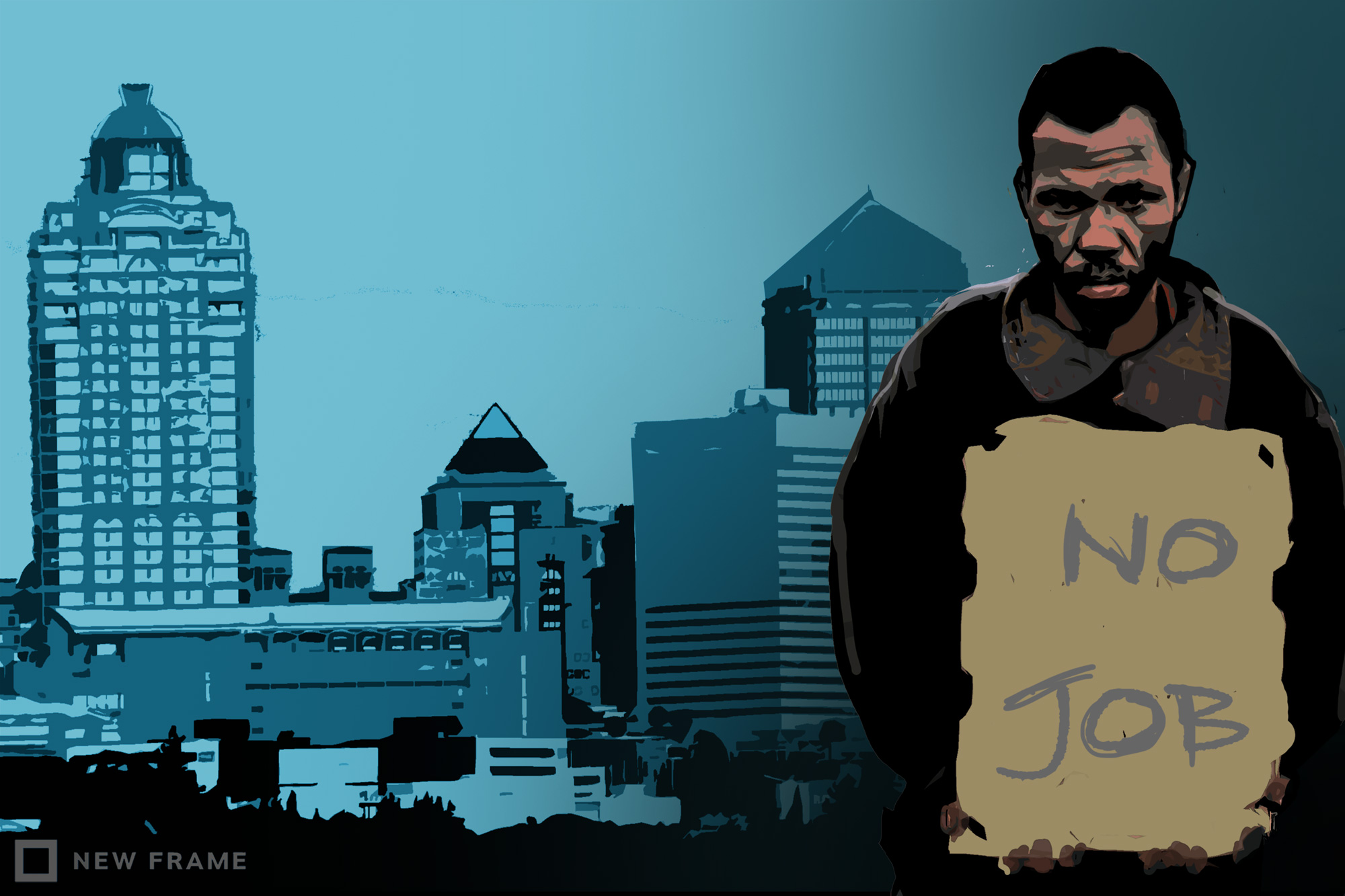Unemployment in South Africa is worse than you think
The unemployment figures in Statistics South Africa’s latest quarterly report are shocking, but 3.5 million people are missing from the official count.
Author:
2 August 2019

Statistics South Africa’s Quarterly Labour Force Survey for the second quarter of this year shows that the country’s unemployment crisis is deepening. But the picture is likely a lot worse than you think.
Released on Tuesday 30 July, two key figures are reported in the survey results: the official and the expanded counts of unemployment.
Official figures count how many people in South Africa’s labour force are out of a job, but looking for work. The expanded unemployment figure includes those people as well as anybody who is out of a job and wants a job, and is not looking for work.
By the official count, 6.7 million people are unemployed in South Africa, which is 29% of everybody who could be working. By the expanded definition, more than 10 million people are unemployed, or 38.5% of people who could be working.

Devil in the detail
Unemployment seems to be a straightforward conversation about whether or not people have work. But the difference between the official and expanded definitions raises the question of who is really unemployed in South Africa, and who is not.
This comes down to who is counted. Some people don’t want jobs, and are not counted in the unemployment statistics as a result. They are “not economically active”. While official unemployment figures lump people who do want jobs, but aren’t actively looking for work, into this category, the expanded unemployment figures count them as unemployed.
Jobless people must actively look for work to be counted as officially unemployed by Statistics South Africa. The national statistics service’s definition of unemployment is consistent with International Labour Organisation (ILO) logic that unemployed people who don’t look for work are not intent on finding it.
Related article:
Economists like Dori Posel from the University of the Witwatersrand’s school of economic and business sciences have pointed out that the ILO includes provisions for countries like South Africa to relax their definitions of unemployment.
Posel is among those who have suggested that people who are not looking for work, but say they want a job, should be counted as unemployed.

Building on work done in the mid-2000s, Neil Lloyd and Murray Leibbrandt from the Southern Africa Labour and Development Research Unit have sought to establish if people who are not looking for work have chosen not to work.
When data from the National Income Dynamics Study panel survey confirmed that people who are not looking for work are considerably less satisfied with their lives, Lloyd and Leibbrandt concluded that they “are involuntarily unemployed and should be seen and counted as being unemployed”.
“This serves as a sobering caution to those who blithely speculate that South African unemployment cannot be as bad as it is made out to be,” according to Lloyd and Leibbrandt.
At 38.5%, South Africa’s unemployment crisis is considerably deeper in light of this expanded definition. An extra 3.5 million unemployed people must be accounted for.
Posel said that “the chance of finding work is very low in South Africa, and the costs of looking for work are high… By excluding the non-searching unemployed, we obviously underestimate the extent of joblessness in South Africa.”

The long view on unemployment
Because Statistics South Africa publish results of the survey four times every year, attention is paid to the quarterly changes in unemployment. Short-term changes like these likely do not reflect real changes owing to sampling measurement issues.
Long-term trends in unemployment are more important. By the expanded definition, unemployment has risen by 8.8 percentage points since 2008. Two of those percentage points have occurred in the past two years.
On the ground, unemployment still hews to the divisions imposed during apartheid. Where 46% of black African people are unemployed, only 9.8% of white people are unemployed. The rural devastation wreaked by apartheid’s Bantustan policies is also reflected in the unemployment figures. The North West and Eastern Cape provinces suffer the worst unemployment – 46.6% and 46.5% respectively – while the urban provinces of Gauteng and the Western Cape are the only two in which unemployment is below 40%.
Continued gender disparities are also mirrored in the figures: 43.5% of women are out of a job while 35% of men are unemployed.

